One of the first ‘facts’ commonly taught in Australia about Aboriginal culture, history and people is the false notion that before the British invasion in 1788 all Aboriginal people were nomadic. The idea flourishes although it’s fundamentally flawed, argues an article on the website “KOORIHISTORY.com”. Their own word to describe themselves, “Koori” is used by the Aboriginal people of Victoria, parts of New South Wales and Tasmania. From the site’s self-depiction: “The Koori History website has been produced primarily as an education resource for both the Aboriginal community and educators alike. Many of the articles found on this site are written with curriculum development in mind, for both primary and secondary level teachers. Koori History explores the cultures of Australia’s First Peoples via a range of key themes, including technology, culture, and language.”
Some more excerpt: “For the majority of Aboriginal people who did not live in Australia’s arid regions it was an entirely inaccurate description of how those people lived….We are a continent of many nations, and our cultures are presented on television, on the internet, and in classrooms in a typically narrow view, based only on the cultures of desert peoples.
“Each of the continent’s many Aboriginal nations have their own distinct borders. These are marked by mountains, rivers and other natural landmarks, in addition to stone arrangements, ‘ring trees’ and other artefacts. Crossing into a neighbouring nation’s lands without permission would incur a punishment, based on that nation’s own particular set of laws.
“Roaming the countryside by random whim with impunity was never a possibility, regardless of whether you were from the coast or the desert. Whilst it’s true that people did travel outside of their own countries, it’s also important to note that this was done only by consultation and invitation.
“Permanent structures which were occupied for the greater part of each year were found in many parts of Australia. The Gunditjmara people in western Victoria are known to have lived in permanent villages, comprising a number of stone walled huts.
“The way that Aboriginal people are presented by the media and by educators desperately needs to change. We’re dealing with 220+ years of repeated misconceptions and a lack of consideration for the true complexity of Australia’s traditional cultures. We are more than the Aboriginal peoples shown on television, who happen to always live in the desert, or in the far north of Australia.”
The site suggests these articles for further reading: Older than the Pyramids: Hopes Victoria's hidden treasure Budj Bim will get World Heritage listing | Scientist debunks nomadic Aborigine 'myth' | Aboriginal Village | Gunyah, Goondie + Wurley: The Aboriginal Architecture of Australia
In the island state of Tasmania south of the mainland, the Tasmanian Aboriginal Centre state secretary, Trudy Maluga has called for more Aboriginal history to be taught in schools so an authentic representation of Australian history is shared.
“I think telling the truth about Tasmania’s history and the atrocities that Tasmanian Aboriginal people have endured, and are still probably enduring today, is very important,” she told the Launceston-based newspaper, The Examiner.
One of Australia’s most feared but largely unknown resistance fighters, Pemulwuy, could soon have his legacy taught in schools throughout New South Wales.
Major new changes to the Higher School Certificate (school exit exam) syllabus will teach NSW students more about indigenous role models and culture. The new history electives will study people who changed Australia, including Aboriginal activists such as Pemulwuy, Faith Bandler, Eddie Mabo, and Charlie Perkins.
Pemulwuy fought against British colonialists at the onset of European settlement, with the landing of the First Fleet in Botany in 1788. A member of the Eora people of the greater Sydney area, Pemulwuy waged a 12-year resistance against the British occupation, countering their superior numbers and firepower with guerrilla style tactics.
Another great but little known Aboriginal resistance fighter, Dundalli, is featured in the book “Warrior” by Libby Connors, a senior lecturer in history at the University of Southern Queensland.
Published last year, it’s a fascinating story of one of the great
Aboriginal resistance fighters of the colonial frontier and a compelling
portrait of life in early Brisbane. “Connors lays down the hard truth. Not all
our warriors were Anzacs. Not all our wars were just,” commented John Birmingham, author and columnist.
In the 1840s, white settlement in the north was under attack. European settlers
were in awe of Aboriginal physical fitness and fighting prowess, and a series
of deadly raids on homesteads made even the townspeople of Brisbane anxious.
“Young Dundalli was renowned for his size and strength, and his elders gave him
the task of leading the resistance against the Europeans' ever-increasing
incursions on their traditional lands. Their response was embedded in
Aboriginal law and Dundalli became one of their greatest lawmen. With his band
of warriors, he had the settlers in thrall for twelve years, evading capture
again and again, until he was finally arrested and publicly executed.
Warrior is the extraordinary story of one of Australia's little-known
heroes, one of many Aboriginal men to die protecting their country. It is also
a fresh and compelling portrait of life in the early days of white settlement
of Brisbane and south east Queensland.
“An enduring record of one of our greatest heroes,” commented Sam Watson, Brisbane Aboriginal activist and
writer.
“Deeply considered and powerfully told, this book recovers the entangled
history of Aboriginal people and settlers in colonial Queensland, a history
which is also Australia's story writ large,” commented Associate Professor Grace Karskens, of the University of NSW.
The peak national organisation of historians, the Australian Historical Association, has declared the book a ‘notable contribution’ to the understanding of the Indigenous experience in 19th century Australia.
A documentary film, Footprints on Our Land, explores the life and legacy of Ngunnawal (Canberra area) Elder Aunty Agnes Shea.
Ranging from her life as a girl on Oak Hill and Hollywood missions in Yass to the present day, Footprints on Our Land captures Aunty Agnes’s life as a survivor of racism, a caring mother and grandmother and a strong advocate for her community.
Made by highly respected documentary filmmaker Pat Fiske, the film portrays an optimistic woman whose tenacity and good humour brought her through the challenges that were typical of a generation of Aboriginal people growing up on missions.
Through her life so far, we see a microcosm of the ongoing Australian journey towards reconciliation. She has shared her time and wisdom with the United Ngunnawal Elders Council and made a major contribution to the establishment of the Ngunnawal Bush Healing Farm.
Footprints on Our Land is testament to a senior Elder whose tireless service welcoming people to Ngunnawal country, in the tradition of her people, has been a major force for reconciliation in the Australian Capital Territory.
Some lived history happened in Tasmania on 9 May, when people from the Aboriginal community opened a park dedicated to Truganini, probably the best known Tasmanian Aboriginal woman of colonial times, who witnessed the turbulent demise of her nation. The group spread her ashes in the sea as she had wished.
Not enough teaching about Aborigines
“When Europe was still the domain of Neanderthals, the earliest Aboriginal societies were establishing complex religions, burying their dead with elaborate rituals, engaging in long-distance trade, making jewellery, and producing magnificent works of art. Very few Australians are aware of this story. It does not easily fit with the colonial mythologies around which popular histories of Australia have traditionally been constructed.”
One of the most comprehensive Aboriginal education resources is the Koori History website, the first Aboriginal owned and operated website, created in 1994 by Aboriginal activist, writer, actor, arts administrator, documentary filmmaker and professor of history at Melbourne’s Victoria University, Gary Foley.
Aboriginal History lost in new school curriculum
Learning history, students feel shocked, angry, betrayed
“Experience of preparation in Indigenous Australian Studies was the most poorly represented.”
“You cannot give children a "watered-down" version of the past”
“Minister wants to steer school curriculum away from the truth about Aboriginal history”
Queensland university students are being officially taught Australia was not settled but ‘invaded’
“I was taught no Aboriginal history at school”
--------------------------------------------------------------------
Look for more Aboriginal books here.

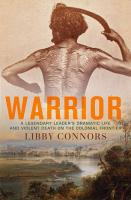
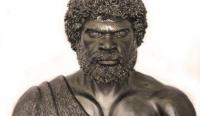
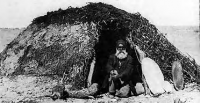
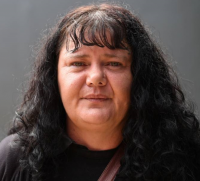
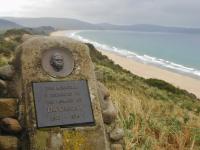

Recently here on linksunten
NT Juvenile Detention Abuse Royal Commissioner Needs No Introduction To Black Territorians | Aboriginal children stripped, tear-gassed, brutalised in Northern Territory prison | Support swelling for treaty, falling for recognition in Australia |
New threat to remove Aborigines from tiny remote communities | Aboriginal mothers are 17.5 times more likely to be victims of homicide in Western Australia than other mums | Does Indigenous Australia Need a #BlackLivesMatter Movement? | First Aboriginal woman in Australia’s main parliament – tokenism or indigenous power boost? | We must die standing and fighting and not lay down and let these bastards have their own way | Aboriginal children as young as 8, 9, 10 and 11 years of age are killing themselves in Australia | Indigenous owners appeal to Minister's 'human side' to shelve proposed nuclear waste site | Let's have treaty and constitutional recognition, Indigenous referendum chief says | “Fuck your constitutional recognition, I want a treaty” | There are lots of ways to say sorry, but Indigenous Australians need a treaty now | Ancient Euahlayi astronomy parallels with Einstein's space-time theory | Aborigines can no longer eat fish from mine-poisoned north Australian river | Elation, sadness and anger over return of north Australian Aboriginal land | “Don’t let Australia into the United Nations Human Rights Council”